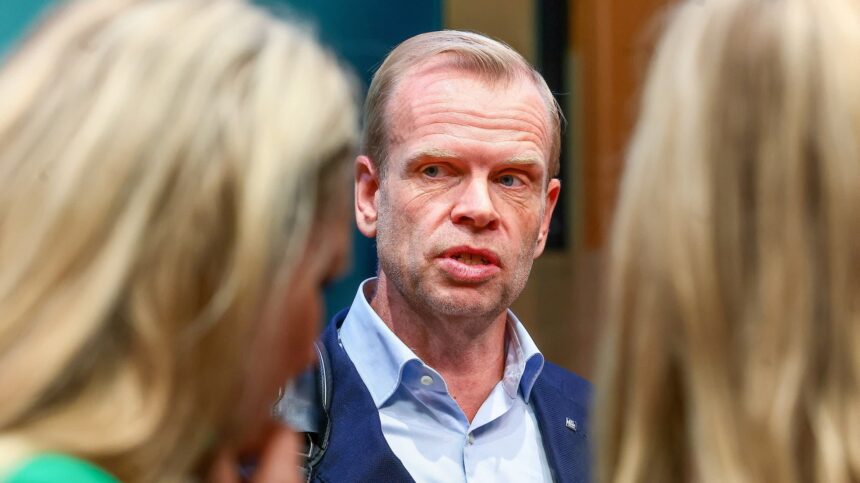The markets caught their collective breath when Russian missiles struck Ukraine’s grain infrastructure in July, but the threat to global food security runs deeper than these headline-grabbing attacks. While wheat futures spiked temporarily, few foresaw the troubling ripple effects now emerging through the fertilizer supply chain – effects that could send food prices climbing worldwide in the coming months.
“We’re witnessing a perfect storm of geopolitical factors that could trigger significant food inflation by early 2025,” warns Svein Tore Holsether, CEO of Norwegian fertilizer giant Yara International, in an interview last week. “The combination of Middle East instability, shipping disruptions, and reduced production capacity creates vulnerabilities that aren’t yet priced into markets.”
Holsether’s concerns center on nitrogen fertilizer, the backbone of global food production that helps farmers boost yields by 30-50% on average. Disruptions in ammonia shipping lanes through the Red Sea have already forced Yara to reroute vessels around Africa’s Cape of Good Hope, adding weeks to delivery times and increasing freight costs by approximately 35%.
The warning from one of the world’s largest fertilizer producers deserves attention given the industry’s position as an early indicator of food price trends. Fertilizer price movements typically precede shifts in food costs by 6-12 months, according to research from the International Food Policy Research Institute.
“When farmers face higher input costs or reduced availability of fertilizer, the effects don’t show up immediately on grocery shelves,” explains Sophia Martinez, agricultural economist at the University of Toronto. “We’re looking at a delayed reaction that hits consumers months later through reduced yields or shifts in planting decisions.”
Current data from the UN Food and Agriculture Organization shows global food prices have stabilized since their post-pandemic peak, with the FAO Food Price Index registering a 10% decline year-over-year. However, this relative calm could prove deceptive as underlying production costs climb behind the scenes.
The fertilizer market’s vulnerability stems partly from its concentrated production. Just ten countries account for approximately 70% of global nitrogen fertilizer capacity, with production heavily dependent on natural gas availability. This geographic concentration creates bottlenecks when political tensions arise in key production regions.
“The Middle East and North Africa produce roughly 30% of globally traded ammonia and urea,” notes Alex Robertson, commodities analyst at RBC Capital Markets. “Any disruption there immediately affects global supplies and subsequently crop yields.”
For Canadian farmers preparing for next season, these developments present difficult choices. Fertilizer typically represents 15-20% of a grain farmer’s operating costs, making it the largest input expense after land. Terry Phillips, who farms 4,000 acres near Regina, Saskatchewan, says he’s already adjusting his plans for next spring.
“I’m considering reducing my fertilizer application rates and shifting some acreage from corn, which is fertilizer-intensive, to soybeans that fix their own nitrogen,” Phillips explains. “When input costs spike, you have to adapt or risk farming at a loss.”
The potential food price increases would arrive at a particularly vulnerable moment for global consumers. After weathering pandemic-era inflation, many households remain financially stretched. Statistics Canada reports that 23% of Canadians are still spending more than they earn each month, leaving little buffer for higher grocery bills.
Market responses to these warning signs remain muted so far. Futures contracts for key grains show modest premiums for later delivery dates, suggesting traders haven’t fully priced in the potential supply constraints. This disconnection between current market signals and underlying fundamentals creates both risks and opportunities, according to investment strategists.
“Agricultural commodities could present an inflation hedge if these supply chain issues materialize as expected,” suggests Priya Misra, head of global rates strategy at TD Securities. “We’re watching fertilizer shipping data and farmer purchasing patterns as leading indicators.”
For policymakers already navigating complex economic crosscurrents, the prospect of renewed food inflation presents additional challenges. Central banks might face pressure to maintain higher interest rates if food costs push overall inflation numbers upward, potentially delaying economic growth.
The Bank of Canada, which has held its policy rate steady at 5% since July, specifically mentions “supply constraints in globally traded goods” as a risk factor in its most recent monetary policy report. A significant uptick in food prices could complicate its path toward potential rate cuts later this year.
Some industry observers note that technology might offer partial solutions. Precision agriculture techniques that optimize fertilizer application can reduce overall usage by 15-20% without sacrificing yields. Companies like Farmers Edge and Trimble are seeing increased demand for their soil testing and variable-rate application systems.
“Smart farming tools let you apply exactly what’s needed where it’s needed,” says Mariko Takahashi, agricultural technology researcher at the University of Guelph. “That efficiency becomes even more valuable when input costs rise.”
For consumers, the potential price increases would add to household budget pressures, with the effects likely felt unevenly across income levels. Food costs typically consume 11-15% of household spending for middle-income Canadians, but can represent over 30% for those in lower income brackets.
As global markets digest these emerging risks, food security experts emphasize the need for policy responses that address both immediate price concerns and longer-term resilience. The world food system remains remarkably productive but increasingly vulnerable to concentration risks and geopolitical shocks.
“Food inflation isn’t just an economic issue – it’s a social stability concern,” Martinez adds. “When basic nutrition becomes unaffordable, the consequences extend well beyond the grocery store.”






